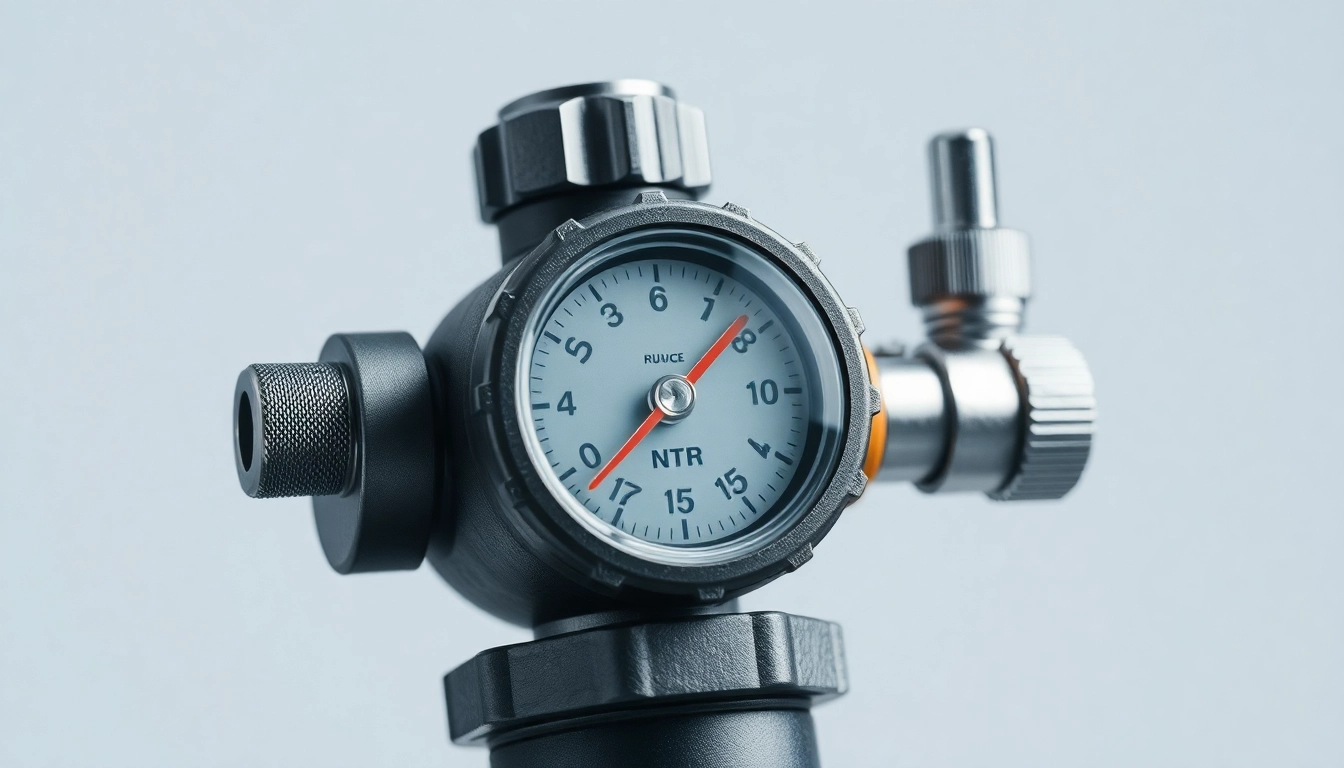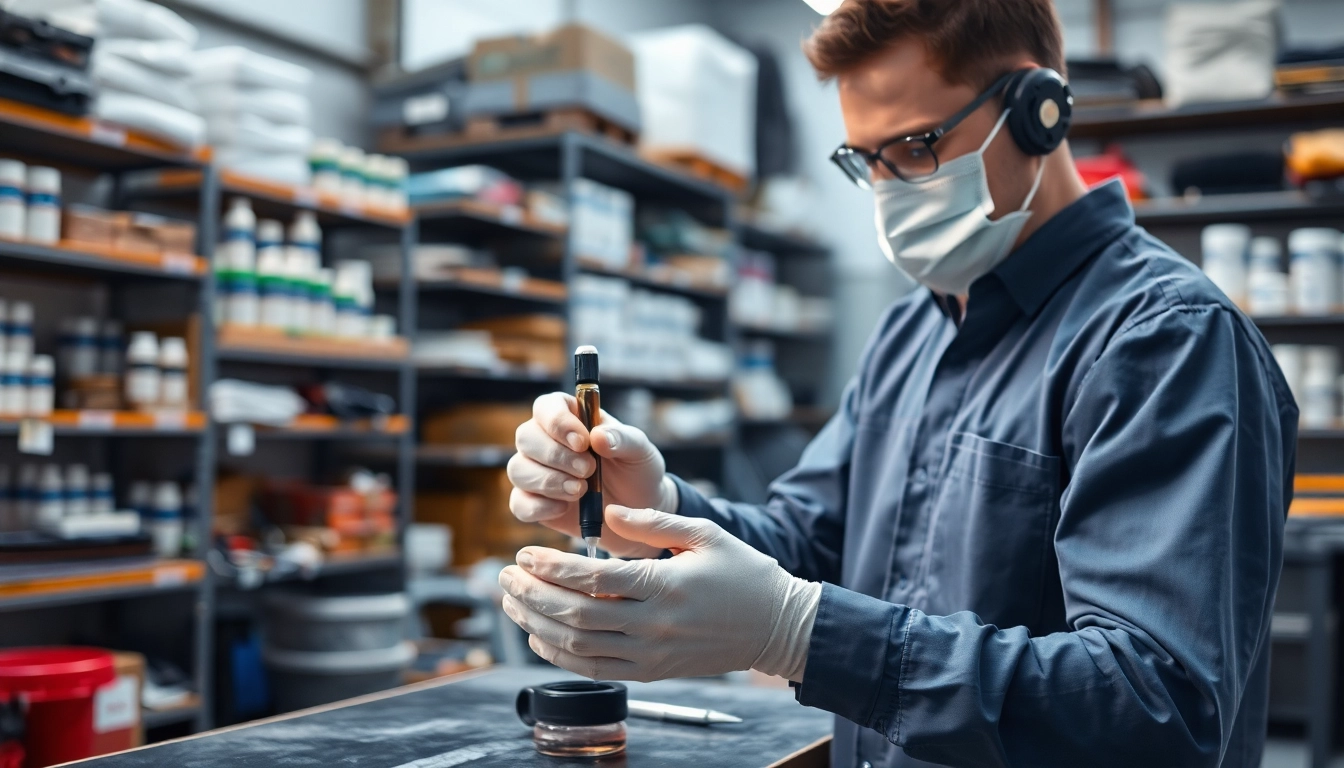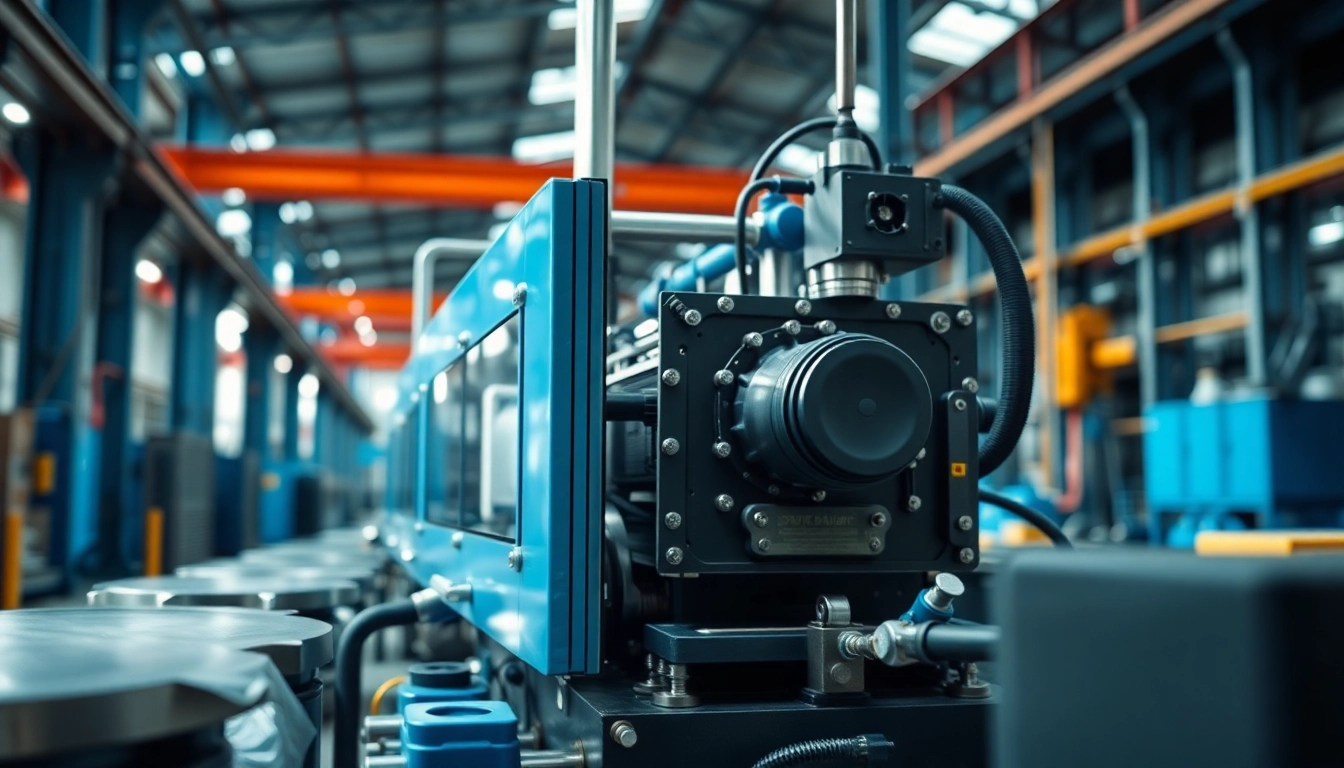Understanding Nitrogen Regulators
What is a Nitrogen Regulator?
A nitrogen regulator is a critical piece of equipment designed to control the pressure at which nitrogen gas is delivered from a cylinder to a system or application. By reducing the high-pressure gas from its storage state to a lower, usable pressure, these regulators ensure consistent and safe operation across a variety of applications, including those used in medical equipment, food and beverage dispensing systems, and welding operations. The core functionality of a nitrogen regulator is to maintain a stable output pressure, regardless of fluctuations in inlet pressure or flow rate, which is vital for the integrity and efficiency of various processes.
Nitrogen regulators are specifically tailored for use with nitrogen and are engineered to accommodate the unique properties of nitrogen gas, including its inertness and pressure requirements. The robust design typically includes a pressure gauge, adjustment knobs, and inlet fittings compatible with nitrogen cylinders. If you’re looking for high-quality equipment, you can explore the full range of nitrogen regulators available.
Applications of Nitrogen Regulators
Nitrogen regulators are employed across various industries due to their versatility and reliability. Here are some common applications:
- Medical and Laboratory Use: In healthcare and research, nitrogen regulators control the gas’s delivery for use in devices such as cryogenics, gas chromatography, and various laboratory settings.
- Food and Beverage Industry: Nitrogen is used to preserve the quality of beverages and food products. Nitrogen regulators are crucial in controlling dispensing pressure in beer taps and various carbonated drinks to ensure consistency and prevent foaming.
- Welding: In the welding sector, nitrogen is often used as a shielding gas. Regulators help deliver nitrogen at the correct pressure during the welding process, thereby ensuring optimal results.
- HVAC Systems: Technicians use nitrogen to purge air from HVAC systems. Regulators maintain an appropriate pressure level to assist in leakage detection and system maintenance.
- Manufacturing: Nitrogen is utilized in various manufacturing applications, including metal fabrication and electronic component production. Regulators play a significant role in ensuring consistent gas flow to processes requiring inert environments.
Key Components and Mechanisms
To understand how nitrogen regulators work, it is essential to break down their key components:
- Inlet and Outlet Ports: The inlet port connects to the nitrogen cylinder, while the outlet port connects to the application or system that requires nitrogen.
- Pressure Gauge: This component displays the inlet and outlet pressures, enabling users to monitor performance and make necessary adjustments.
- Adjustment Knob: Users can adjust the pressure output according to specific needs, allowing for precise control over the nitrogen delivered.
- Diaphragm: The diaphragm is the heart of the regulator, responding to changes in pressure. It adjusts the flow of gas accordingly, maintaining a constant output pressure.
- Safety Features: Many nitrogen regulators are equipped with safety valves and pressure relief mechanisms to prevent over-pressurization, ensuring safe operation.
Types of Nitrogen Regulators
Standard vs. Specialty Nitrogen Regulators
Nitrogen regulators come in two main categories: standard and specialty. Standard regulators are designed for general use across various applications and are typically suitable for most standard pressure requirements. They are versatile and widely available, making them an ideal choice for many users.
Specialty nitrogen regulators, on the other hand, are tailored for specific applications or environments. For example, some specialty regulators are designed to withstand higher pressures or extreme temperatures, while others might be specifically designed for use in food and beverage applications, featuring specialized fittings to prevent contamination.
High Pressure vs. Low Pressure Regulators
Nitrogen regulators also differ in terms of pressure ratings. High-pressure regulators are designed to handle gas pressures of 500 psi and above, making them ideal for applications such as industrial nitrogen delivery and welding. In contrast, low-pressure regulators are typically used in applications that require a more gentle flow of nitrogen, such as food dispensing systems.
Choosing the Right Type for Your Needs
Selecting the correct nitrogen regulator is crucial for ensuring efficiency and safety in your operations. Here are some factors to consider:
- Application Requirements: Understand the specific needs of your operation, such as the necessary pressure range and the type of nitrogen use. This will help narrow down your choices.
- Flow Rate: Determine the flow rate requirements for your application. Some regulators are optimized for higher flow rates, while others function better at lower rates.
- Safety Features: Ensure that the regulator has necessary safety features, especially if you’re working with high pressures or hazardous environments.
How to Select a Nitrogen Regulator
Important Features to Consider
When choosing a nitrogen regulator, several essential features should be carefully evaluated:
- Pressure Range: Ensure the regulator can handle the desired inlet and outlet pressure ranges for your application.
- Material Construction: Select regulators made from durable materials that can withstand the conditions in which they will be used, such as stainless steel for corrosive environments.
- Compatibility: Verify that the regulator is compatible with the nitrogen cylinder and any other equipment it will be connected to, including fittings and hoses.
- Ease of Use: Look for user-friendly features, such as easy-to-read gauges and intuitive adjustment mechanisms.
Common Brands and Their Offerings
Several reputable brands dominate the nitrogen regulator market, each offering various models and specifications:
- Victor: Known for its high-quality welding and cutting equipment, Victor offers robust nitrogen regulators suitable for industrial applications.
- Smith: Providing both standard and specialty regulators, Smith’s products are favored in the food and beverage industry for their precise control and reliability.
- Uniweld: Uniweld’s nitrogen regulators are noted for their compact design and versatility, making them compatible for various implementations.
- McMaster-Carr: This retailer offers an extensive selection of nitrogen regulators, making them a go-to for those seeking specific features or configurations.
Cost Factors and Budgeting Tips
The cost of nitrogen regulators can vary significantly based on their specifications and features. Here are some budgeting tips to consider:
- Assess Total Costs: Consider the initial purchase price, as well as any additional costs such as fittings and installation, to get a full picture of the expense.
- Long-Term Investment: Investing in higher-quality regulators may save money on repairs, replacements, and operational inefficiencies over time.
- Look for Discounts: Websites offering bulk purchase deals or seasonal discounts can provide opportunities for cost savings.
Installation and Usage Guidelines
Step-by-Step Installation Process
Installing a nitrogen regulator is a task that requires careful adherence to safety and operational guidelines:
- Disconnect and Inspect: Ensure that the nitrogen cylinder is turned off and disconnected before installing the regulator. Inspect the regulator and fittings for any signs of wear or damage.
- Attach the Regulator: Connect the regulator to the nitrogen cylinder using the appropriate inlet fitting, ensuring a snug and secure fit to prevent leaks.
- Adjust the Pressure: Before opening the cylinder valve, set the desired outlet pressure on the regulator.
- Open the Cylinder Valve: Gradually open the valve on the nitrogen cylinder while monitoring the pressure gauge on the regulator to ensure it matches the desired output.
- Check for Leaks: Use a soap solution around all connections to check for leaks. If bubbles form, tighten fittings or replace damaged components before proceeding.
Safety Precautions and Best Practices
Safety is paramount when working with nitrogen regulators. Here are some best practices to follow:
- Training: Ensure all personnel operating the nitrogen regulator are adequately trained in handling gases and understand safety protocols.
- Personal Protective Equipment (PPE): Always wear appropriate PPE, such as gloves and safety goggles, when handling nitrogen regulators and cylinders.
- Storage: Store nitrogen cylinders in a well-ventilated area away from heat sources, and ensure they are secured to prevent tipping.
Troubleshooting Common Issues
Even with proper installation and maintenance, users may encounter issues with nitrogen regulators. Here are some common problems and their solutions:
- Inconsistent Pressure: This can be due to a faulty regulator or a worn diaphragm. Check the regulator for leaks and replace faulty parts as necessary.
- Low Flow Rate: If the nitrogen flow is less than expected, inspect hoses and fittings for blockages or kinks, and ensure the regulator is set to the correct pressure.
- Pressure Gauge Malfunction: If the gauge is not reading accurately, it may be damaged. Replace the gauge or the entire regulator if necessary.
Maintenance of Nitrogen Regulators
Routine Maintenance Practices
Regular maintenance is vital to prolonging the lifespan of nitrogen regulators. Here are key practices to incorporate:
- Visual Inspections: Regularly inspect the regulator and its associated components for any signs of wear, corrosion, or damage.
- Cleaning: Keep the regulator free from dust and contaminants, especially around fitting connections and pressure gauges.
- Functional Checks: Periodically assess the performance of the regulator by checking output pressure against specifications during use.
When to Replace Your Nitrogen Regulator
Certain signs indicate that a nitrogen regulator may need to be replaced:
- Frequent Leaks: If leaks occur often, it may indicate component failure that requires replacement.
- Inconsistent Performance: If the regulator fails to maintain stable pressure consistently, it may signal that the internal mechanisms are worn or damaged.
- Physical Damage: Any visible cracks, corrosion, or significant wear could compromise safety and should prompt immediate replacement.
Benefits of Regular Maintenance
Engaging in regular maintenance offers numerous advantages:
- Increased Safety: Proper maintenance minimizes the risk of accidents associated with gas pressure failures.
- Enhanced Performance: Well-maintained regulators provide more consistent pressure and prevent production downtimes.
- Cost Savings: Regular check-ups can prevent costly repairs and replacements, supporting a better return on investment.



